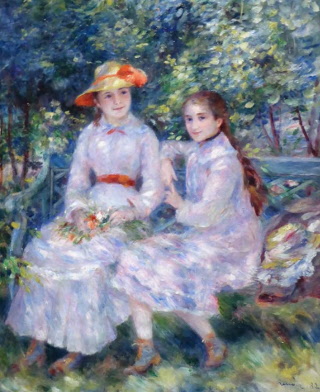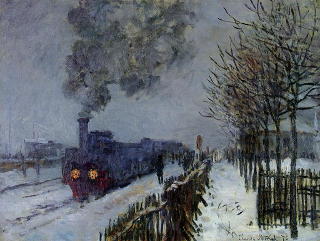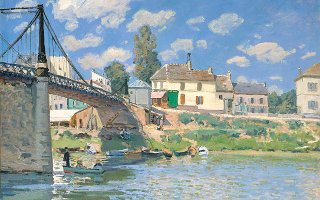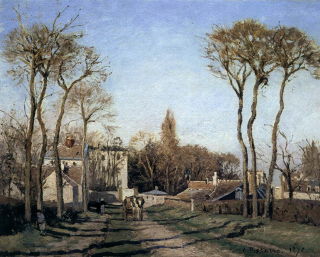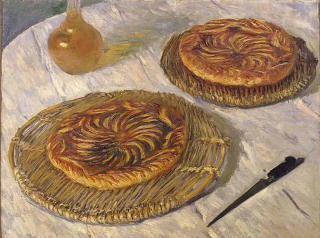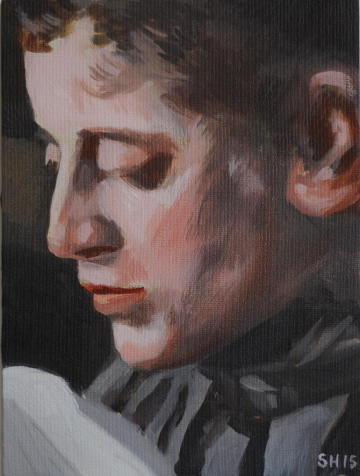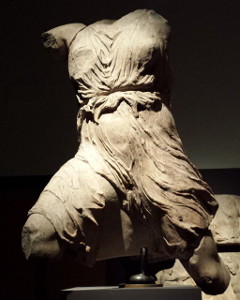
If you like art, the Artsy site is worth a visit. Not only is it well put together, it has a lot of good content i.e. great art. If you click on an image, you can (usually) zoom into an image and get a proper look at it as well.
Of immediate interest is seeing the shows, both current and previous, listed for a museum. The page for the National Gallery includes a good selection of work from the current show, Inventing Impressionism :
Looking forward to the Goya show later in the year.
Similar to Artsy is the Google Art Project, which also lets you zoom around museum collections around the world. I'm sure you can spend hours on a site like these.
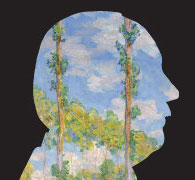
It's always worth looking at impressionist paintings, whether the french or american variety. I blogged about the American Impressionism exhibition in Edinburgh last year.
So a new exhibition at the National Gallery, Inventing Impressionism, is an essential visit.
In fact, this is the second time I've been to this show. Being close to some original, new (to me) Monet, Sisley, Pissarro and others is something I find hard to resist.
Another reason I decided to part with my money again was the Renoir on display. Pierre-Auguste Renoir is an artist I generally fell out of love with a long time ago, feeling that they were far too bright, sweet and even "fluffy" (for want of a better word) for my taste. There are a couple like this in the show but this new exhibition begins with some wonderful Renoir's that have reset him in my estimation. Full of colour and life.
Some examples :
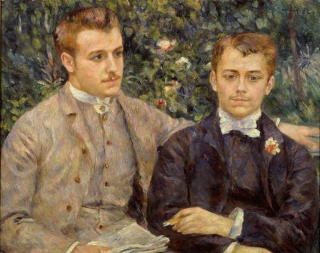
Portrait of Charles and Georges Durand Ruel
Oil on Canvas, 1882
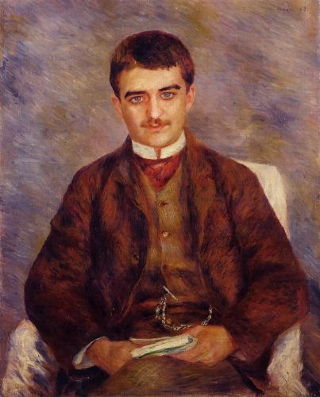
Joseph Durand Ruel
Oil on Canvas, 1882
The Daughters of Durand-Ruel
Oil on Canvas, 1882
Click for larger.
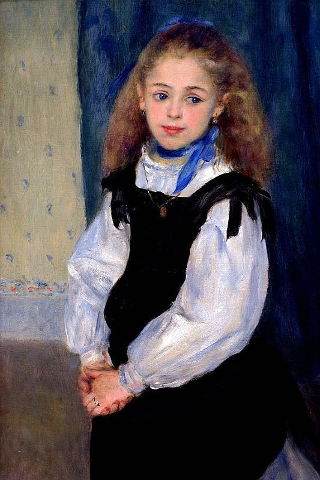
Portrait of Mademoiselle Legrand
Oil on Canvas, 1875
A few other works of his also stand out here, especially his tall paintings of couples dancing, such as Dance in the Country.
Of course, in addition to the Renoir, we also have many great works from some other well known impressionist artists, including Claude Monet, Alfred Sisley and Camille Pissaro. These three artists are often very similar in style, so much so that it is sometimes hard to tell them apart.
The Train in the Snow
Claude Monet
Oil on Canvas, 1875
The Bridge at Villeneuve-la-Garenne
Alfred Sisley
Oil on Canvas, 1872
Entrance to the Village of Voisins
Camille Pissarro
Oil on Canvas 1872
The Galettes
Claude Monet
Oil on Canvas 1882
A lot of paintings here are from private collections, or american galleries, so a lot new to see. It is definitely worth travelling to catch them here while you can. The show ends at the end of May.
The Curious Incident of the Dog in the Night-Time
By Mark Haddon

On the way home each day from work, I often notice the large banner advertising the production of The Curious Incident of the Dog in the Night-Time at the Gielgud Theatre on Shaftesbury Avenue. I bought the paperback a few months ago in a charity shop and thought I'd whittle down my "to read" list.
The book by Mark Haddon appeared a few years ago and won many awards and plaudits. The story is very basic : an "investigation" by a 15 year old autistic boy into the circumstances of the killing of a neighbour's dog. The story is "written" by Christopher and so has a child-like quality to it. But the major aspect of the book is Christopher's autism: this permeates everything he writes about and everything about his world.

Anyone who recalls the film Rainman knows some basic features of this condition: problems with social and personal interactions, an inability to look people in the eye, or understand facial expressions or emotions, a sometimes excessive interest in more "mechanical" thoughts or behaviours. The condition is a spectrum however and has many possible aspects. We see the pain and difficulty of life through Christopher's eyes and come to appreciate not only his own terrible problems but his family's as well. In some places it is hard to read because of this, but also enlightening (and funny in parts). I have heard the book praised by people with direct experience of autism, whether personally or within their own family.
The book is not long and a quick and "easy" read. Although I thought it was well written, it is still written "by" a child (and one with autism) and is therefore sometimes a bit too "simple" for my taste sometimes. However, it is still an excellent way to see the world from a very different perspective and this is one aspect of a fine novel.
I am also very tempted to go and see how well the book translates to the stage.
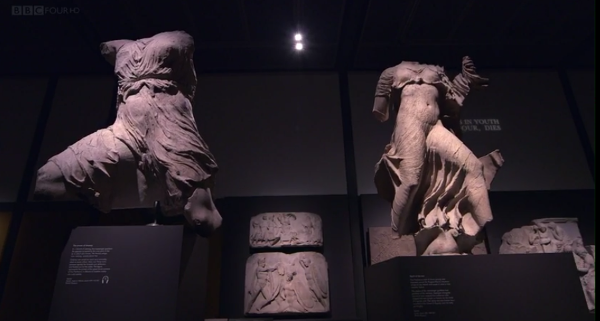
The BBC have a program in their Secret Knowledge series about the Defining Beauty show at the British Museum.
If you can, catch the program on iPlayer.
The Lathe of Heaven
By Ursula Le Guin
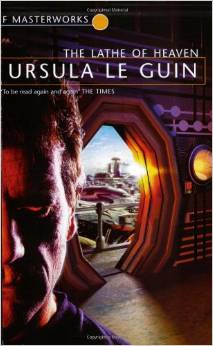
It took me a while to get into this book, the first third seemed a little slow. Thankfully though, it got a lot better and by the end I found it moving.
George Orr's dreams change waking reality, and all of history making up this reality. A gift? No a curse. Wanting to be "cured" of this terrible burden, he is given therapy by William Haber, a scientist and sleep researcher. The talented, well meaning but somewhat megalomaniacal Haber decides to use Orr instead, directing the dreams himself using a machine of his own design. Whatever good intentions Haber has, dreams are far from logical and things do not always go to plan. The world goes through a number of (sometimes) radical changes throughout the book as a consequence, until Orr discovers some understanding of his place in the world.
There's a fair amount to digest here, not least the nature of reality. Le Guin weaves in some Chinese style mysticism, from the novel's title, the Lao Tse aphorisms that often head the chapters and the toying with the dream versus the real. Much the sort of thing Philip K. Dick was always juggling in his books.
Those whom heaven helps we call the sons of heaven. They do not learn this by learning. They do not work it
by working. They do not reason it by using reason. To let understanding stop, at what cannot be understood,is a
high attainment. Those that cannot do it will be destroyed on the lathe of heaven.
-- Chuang Tse: XXIII
This quote gives the novel its name but it's a misquote apparently.
A bit of a slog to start but in the end worth reading, with some thought provoking ideas. You have to be careful what you wish for.
Stories of Your Life and Others
By Ted Chiang

I saw Ted Chiang's work come highly recommended online but had never heard of him. When I saw a very cheap kindle version of a book of his, I took the chance and bought it.
A small book of (eight) short stories, Stories of Your Life and Others was well worth downloading and reading. It starts with a story set in the (supposed) past with the builders of the Tower of Babel, reaching the sky and beyond. From there, it covers stories dealing with the consequences of a massively enhanced intelligence, alien contact and communication (and how it changes one person's own thought processes), a problematic maths discovery and other off-beat and thought-provoking stories. They often have a fascination with maths, language, discovery and our future trajectory given the many changes we see around us.
Here's an article onine about the author
He's not very prolific and this seems to be because he sticks with another job he likes (technical writer) and likes to think through his writing deeply. This seems to work very well.
It's been a while again (almost 12 weeks!) but I finally sat down to do a bit more painting, again following the path of least resistance and using a Will Kemp tutorial.
Many of these portrait painting tutorials use something called a "Zorn Palette", after the 19th Century Swedish painter Anders Zorn, someone I'd not heard of before. A limited palette using only ivory black, titanium white, yellow ochre and cadmium red (although some raw umber is also used for the ground).
Zorn painted Portrait of Emma Zorn and my small, cropped copy is below.
If you follow the linkt, try to ignore the (probably) great difference in colour you'll see. Colour calibration needed as always.
This is a small painting (6"x8") in acrylic on Daler board.
This is "version 1" - version "2" has turned out much worse unfortunately. It was supposed to be am improvement but it looks like I'll abandon and junk.
Kemp paints this Alla Prima, apparently in one go, under an hour. I took two or three sittings, one about 20 minutes for the greys and base, then a couple more of 20 or 30 minutes each for the skin tones and the completion.

A good visit to the new British Museum exhibition Defining Beauty, a look at how the Ancient Greeks represented and viewed the human body. Mostly beauty here but there are some contrasting views of the uglier, whether the satyr, centaur or Socrates himself.
Socrates was famously quite ugly, although very appreciative of the beautiful young male athletes he watched in the gymnasium. Hmm. Ahem, anyway, the inimitable Brian Sewell talks about this side of the show.
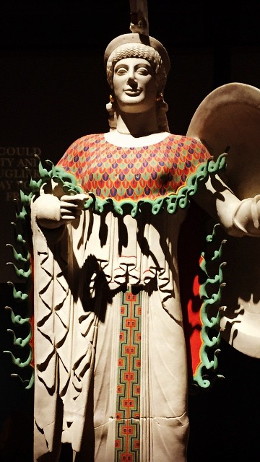
It was quite a revelation a few years ago when it became apparent that the pure white marble we're familiar with was anything but pure and white when first erected.
Researchers have come to the conclusion (since backed up conclusively) that the Ancient Greeks painted their sculptures and statues in bright colours, perhaps to a garish degree to the modern eye. This was on display in the second room of the show and was startling to see for a change. Very different.
Right: Restoration of the polychrome decoration of the Athena statue from the Aphaea temple at Aegina, c. 490 BC. See wikipedia.
Below: Trojan archer from the Temple of Aphaia on Aegina, Greek, c. 490-480 B.C. As it exists now on the left and on the right, as it would have looked (and as displayed in Defining Beauty).
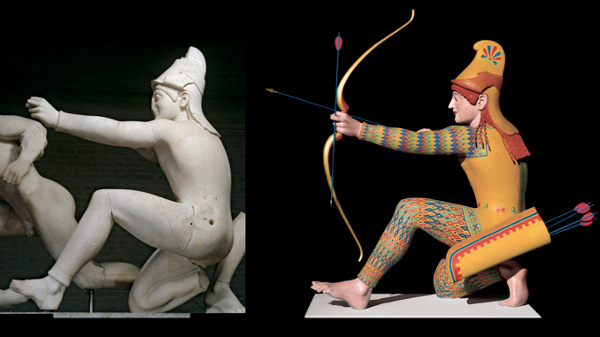
Some more examples of what the old statues might have looked like in place, and discussion :
- Dazzlers (Harvard Magazine)
- True Colors of Ancient Greek and Roman Statues
- True Colors (Smithsonian Magazine)
- Carved in Living Color (Archaeological Institute of America)
Leaving aside the colours, most displays were the normal grey and white stone (with some bronze) but there is some amazing work here.
This includes the very beautifully carved drapery on Iris, from the west pediment of the Parthenon.
Iris was a messenger god and was placed to accompany Poseidon. With her wings now missing, she was carved as if just coming in to land on the building.
Click the picture for a slightly larger version (then use the back button to return to this page).
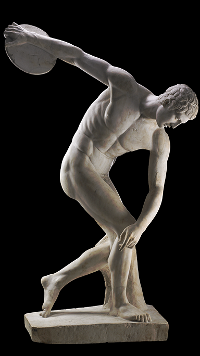
Also on show, the large discus-thrower (discobolus). This is a Roman copy from the 2nd century AD of a bronze original of the 5th century BC. Statue from Hadrian’s Villa in Tivoli, Italy.
Quite a few on display are actually Roman copies of lost Greek originals. Luckily, the Romans made excellent copies and were great students of the Greek style. This is an amazingly life-like and well made piece.
Perhaps the last thing to mention is the exhibition display. On show in the Sainsbury Exhibitions Gallery, a new space to me I think, the rooms are large and tall, and the lighting dramatic in the dark space. This made a very welcome change from the standard display rooms, brightly lit and against similar grey and white stone and marble floor and walls. The British Museum is lucky to have these works in its permanent collection.
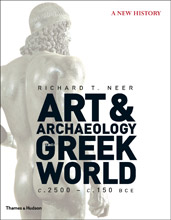
The publisher Thames and Hudson have a page on it where you can click the book cover for a look inside. A beautiful large format hardcover like this is beyond the capabilities of an e-book.
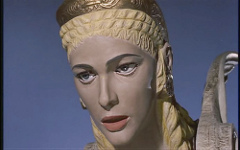
The British Museum have a good blog post on the exhibition's design. Worth a look.




